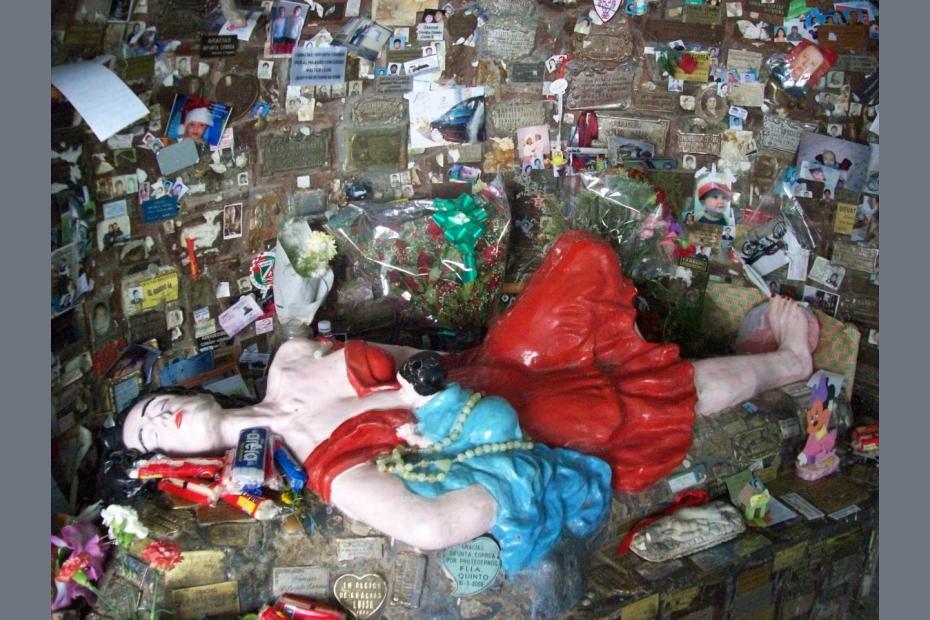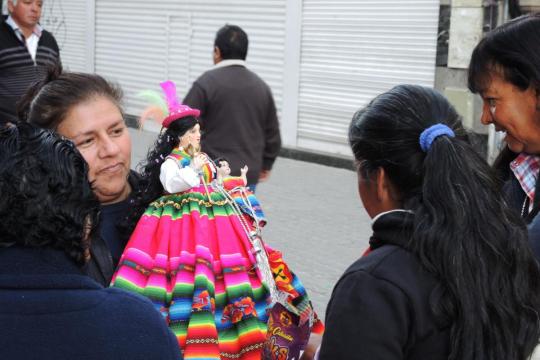Along the roads of north-central Argentina in particular, among the many red-flagged shrines to Gauchito Gil, one also frequently encounters white shrines to Difunta Correa. Like Gaucho Gil, the Difunta (deceased) Correa is a popular, though unofficial, saint with roots in the Argentine civil wars. As the story is generally recounted today, Deolinda Correa, wife of a forcibly conscripted soldier in northeast Argentina, died in the desert, where she followed him and soon became lost. Her baby was found alive under her corpse, having survived by suckling on her. Cattle drivers developed a devotion to her, and she became known as a protectress of cattle drivers, and later to truck drivers and all other travelers.
Defunta Correa’s story speaks of both tragedy and motherly protection and determination. Motherly protection is a theme that one often almost always hears from Argentines who talk about the Virgin Mary. Frank Graziano, who has studied the devotion in depth, suggests that though there is an aura of the miraculous attached to Difunta Correa, she is primarily attractive as a role model, as one who helped people struggle through a difficult situation, rather than as one who miraculously solves problems effortlessly.1 Not surprisingly, given the role she played for her child, she is also a protector.
She is usually prostrate with an infant suckling at her breast. Her roadside shrines often have large numbers of empty water bottles left as offerings, a reminder of the circumstances that led to her death.
She also has a large shrine that has grown up around the isolated desert spot where she died, including “several devotional chapels, a museum, retail arcades, a small hotel, many restaurants, a Catholic church, administrative and support buildings, a police station, a health center, and a post office.” The shrine draws penitents who walk some distance to the shrine to imitate her suffering.2 According to Graziano, almost all of this development took place under the leadership of a parish priest beginning in 1963.3 The priest apparently wanted to respect, but also channel, the people’s piety, and dedicated the church to Our Lady of Mt. Carmel. Still, Graziano maintains, Difunta Correia is the primary object of devotion at the site, which is full of ex voto offerings of thanks for her intercession.4 According to Graziano, devotees regard Defunta as a powerful figure, but also one who expects an offering of respect in return.
As of 2005, Graziano maintains, more than 500,000 Argentines visited the site annually.
Read more
Frank Graziano, Cultures of Devotion: Folk Saints in Spanish America (Oxford: 2007).


